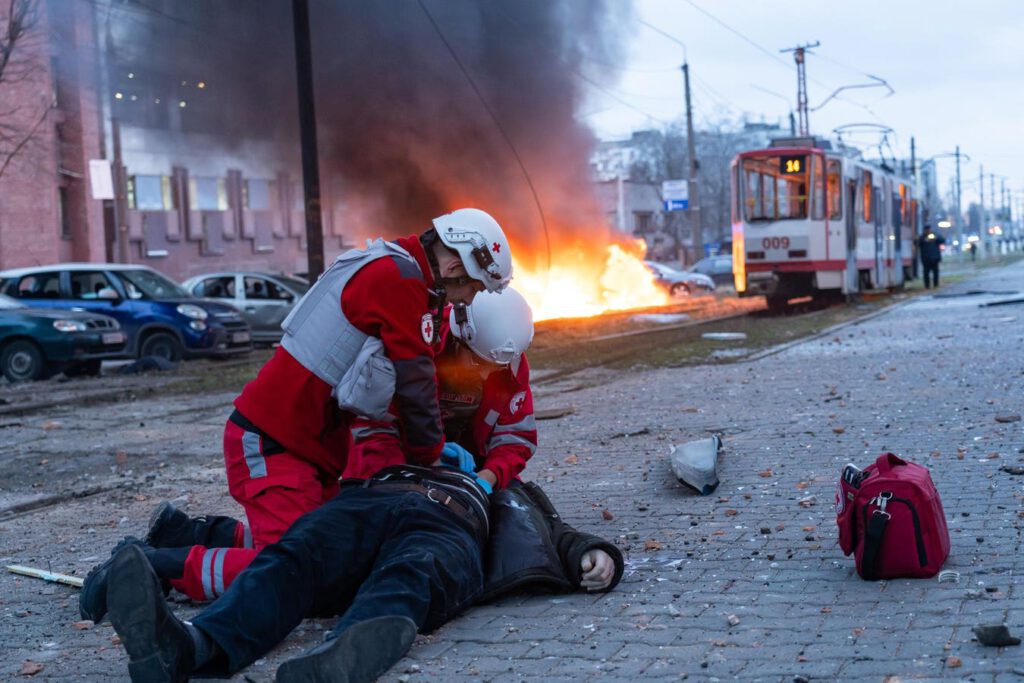ZAPHORIZHZHIA, UKRAINE – JANUARY 8: (——EDITORIAL USE ONLY MANDATORY CREDIT – ‚ZAPORIZHZHIA REGIONAL … [+]
Dispatches from Ukraine. Day 1,052
Regional.
Zaporizhzhia region. On January 8, Russian forces launched one of the most devastating attacks of the war in this region, dropping two glide bombs that killed at least 13 people and wounded 122 others. The city declared a day of mourning on January 9, the third such observance in just 40 days. In each of the previous two attacks, Russian forces killed more than 10 people.
Kherson region. Russian forces launched drone strikes on the village of Berislav, killing one civilian and wounding three others. Artillery shelling in other villages resulted in the death of a 60-year-old woman. Ukrainian authorities have opened investigations into possible war crimes in these incidents.
Donetsk region. Russian shelling in the front-line city of Siversk on January 9 resulted in the deaths of three civilians.
World.
After pledging during his campaign to end the Ukraine war within 24 hours, U.S. President-elect Donald Trump now has extended the timeline to several months. European allies interpret this shift as an indication that his administration might not abruptly withdraw support for Ukraine. Trump now suggests a six-month window for a conflict resolution, while special envoy Keith Kellogg envisions a 100-day plan. Kellogg’s planned visit to Kyiv and other European capitals has been postponed until after Trump’s inauguration on January 20. Despite the timeline shift, Trump has reaffirmed his commitment to address Ukraine’s security concerns while engaging with Russia.
The U.S. announced a $500 million military aid package to Ukraine on January 9, bringing total security assistance since Russia’s 2022 invasion to $65 billion. The package includes air defense missiles, ammunition and F-16 fighter jet equipment. This delivery marks the final military aid package from President Joe Biden’s administration as Russian forces are making their most rapid gains in nearly three years of war. The U.S. intends weekly shipments of arms to use up the remaining $7.1 billion of allocated aid by the end of Biden’s term.
A recent report from the American Enterprise Institute (AEI) estimates that a Russian victory in Ukraine might cost the U.S. $808 billion more in defense spending, driven by increased military needs to counter Russian threats in Europe. This sum far exceeds total U.S. aid to Ukraine. Although President-elect Trump has criticized U.S. spending on Ukraine, the AEI emphasizes that supporting Ukraine is a more cost-effective strategy.
Russia’s seaborne crude oil exports have fallen to their lowest level in more than 16 months, declining to 540,000 barrels per day from their October peak. Shipments from Russia’s key western ports, particularly Ust-Luga, have dropped by 25%, reflecting a combination of canceled orders and increased domestic refining that has limited exports. The situation is exacerbated by tightening international sanctions on Russia’s „shadow fleet“ of tankers and China’s decision to close major eastern ports to vessels blacklisted by the U.S. In addition, Ukrainian attacks on Russian refineries have reduced production. The latest such strike on January 8 set off still uncontrolled fires at a strategic installation near Russia’s border with Kazakhstan.
While record shipments from the Kozimo port in eastern Siberia offset some losses in December, overall export volumes remain sharply down. With the U.S. administration considering a full embargo and additional sanctions, Russia’s energy-dependent economy, which generated $100 billion in 2023, will probably face growing financial strain amid efforts to cut off funding for the war in Ukraine.
Russia’s war-driven economic boom, fueled by government spending and high wages, is showing signs of strain as inflation and record-high interest rates take their toll. Despite a robust mood in major cities and resilient consumer sentiment, the nation’s Central Bank forecasts a sharp economic slowdown, with growth potentially plunging to 0.5% in 2025 from an estimated 3.5%-4% in 2024. Key industries, from agriculture to manufacturing, are scaling back investments, and rising borrowing costs are driving fears of bankruptcies in sectors such as automotive and agriculture.
Compounding the challenges are economic sanctions, a weakened ruble, uncertainty surrounding oil prices and China’s economic outlook. The government projects easing inflation and lower interest rates within the year, but risks loom large, including the impact of declining crude oil prices and payment disruptions in international trade. Analysts suggest that a prolonged war could exacerbate these issues, while a quick resolution might stabilize the ruble and revive foreign investment.
National.
Ukraine’s international currency reserves surged to $43.8 billion in December 2024, driven by more than $9 billion in financial aid from partners, including $4.4 billion from the EU and $3.9 billion via the World Bank. Despite significant currency interventions totaling $5.3 billion, record inflows helped bolster the nation’s reserves. The funds supported external debt payments and stabilized Ukraine’s currency amid sustained economic pressures. In 2024 as in 2023, Ukraine secured $42 billion in international aid and aims for $38 billion in 2025 to maintain financial resilience and reinforce its currency reserves.
Ukraine has developed a laser defense system that can shoot down aircraft more than a mile above ground. Only a few other countries, including the U.S., China and Israel, have such a system. Ukraine has not announced when the system, expected to be particularly effective against drones, will become operational.
A recent survey by the Kyiv International Institute of Sociology reveals a significant decline in public trust in President Volodymyr Zelenskyy, with approval dropping from 77% in December, 2023, to 52% by the end of 2024. Distrust also rose to 39%. While Zelenskyy still maintains more trust than distrust, overall uncertainty is rising, particularly among those who hold pessimistic or uncertain views about Ukraine’s future.
By Danylo Nosov, Alan Sacks.

